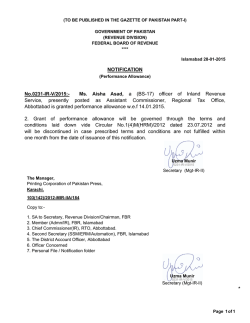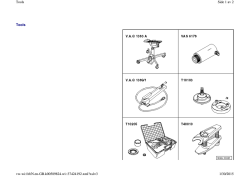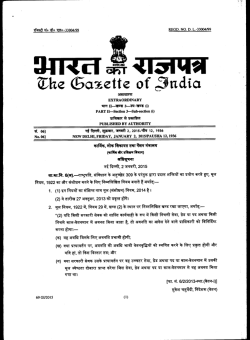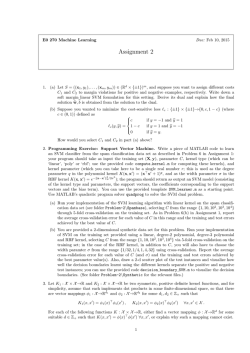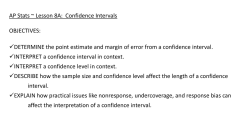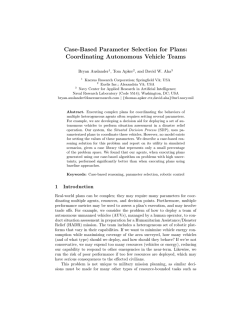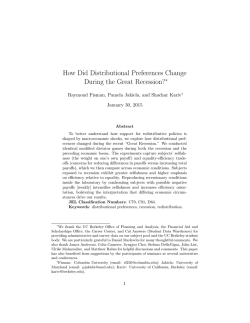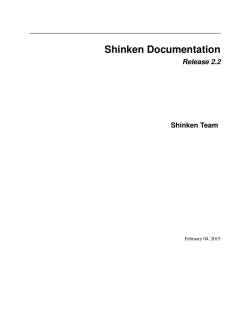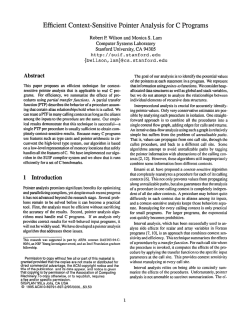
ÿþR eportingand A nalysis F ramework E rror M essage R eference
ORACLE® HYPERION REPORTING AND ANALYSIS FRAMEWORK
Release 11.1.2.4
Error Message Reference
EPMBPMUI-00101: Initializing configuration factory.
Cause: The application is initializing its configuration factory at application startup.
Action: No action is required.
Level: 1
Type: NOTIFICATION
EPMBPMUI-00102: Terminating configuration factory.
Cause: The application is shutting down its configuration factory at application shutdown.
Action: No action is required.
Level: 1
Type: NOTIFICATION
EPMBPMUI-00201: Parameter "{0}" has value "{1}".
Cause: Reports the value of a configuration factory parameter during startup.
Action: No action is required.
Level: 1
Type: NOTIFICATION
EPMBPMUI-00204: Failed to initialize the class "{0}" with its default constructor.
Cause: The configuration factory could not create a configuration class.
Action: Consult the application configuration log for further details.
Level: 1
Type: ERROR
EPMBPMUI-00205: Failed to instantiate the class "{0}".
Cause: The configuration factory could not create a configuration class.
Action: Consult the application configuration log for further details.
Level: 1
Type: ERROR
EPMBPMUI-00206: Failed to initialize the configuration class.
Cause: The configuration factory could create, but could not initialize, a configuration class.
Action: Consult the application configuration log for further details.
Level: 1
Type: ERROR
EPMBPMUI-00207: Failed to resolve the class "{0}".
Cause: The configuration factory could not find a named class definition to create.
Action: Consult the application configuration log for further details.
Level: 1
Type: ERROR
EPMBPMUI-00208: Failed to initialize the configuration class.
Cause: The configuration factory could create, but could not initialize, a configuration class.
Action: Consult the application configuration log for further details.
Level: 1
Type: ERROR
EPMBPMUI-00209: Configuration class application parameter "{0}" was not specified in "web.xml".
Cause: A required parameter for the configuration factory was not specified in the
application configuration.
Action: Verify that the named parameter is present in the file "web.xml", and that any
customizations of this file did not remove it.
Level: 1
Type: ERROR
EPMBPMUI-00210: The configuration Factory's configuration instance was null. There was an
initialization error during application startup.
Cause: Due to previous errors, the configuration factory was not able to create a
configuration instance.
Action: Consult the application configuration logs for previous errors.
Level: 1
Type: ERROR
EPMBPMUI-00211: There was an error during configuration instance termination.
Cause: The configuration factory was unable to terminate a configuration instance.
Action: This error is not immediately fatal, but may result in a memory leak over time if
repeated.
Level: 1
Type: ERROR
EPMBPMUI-00212: The Configuration instance was not initialized. Ensure the context parameter "{0}"
is set correctly, and check for errors during application startup.
Cause: The configuration factory could not initialize its configuration instance due to a
missing parameter in "web.xml".
Action: Verify that the named parameter is present in the file "web.xml", and that any
customizations of this file did not remove it.
Level: 1
Type: ERROR
EPMBPMUI-00402: There was an error getting the context configuration parameter "{0}".
Cause: The application was unable to load the path to its context configuration from the
configuration parameter BpmContextConfig.
Action: Verify that application configuration completed successfully, and that any
customizations to this application did not remove this parameter.
Level: 1
Type: ERROR
2
EPMBPMUI-00403: There was an error getting the common install version number.
Cause: The application was unable to determine the version number of the common
installer.
Action: Verify that the file EPM_ORACLE_HOME/common/config/11.1.2.0/
installer_version.xml exists, is accessible, and is a valid XML file.
Level: 1
Type: ERROR
EPMBPMUI-00501: Failed to load and parse "{0}".
Cause: The configuration class failed to load the named file.
Action: Consult the application configuration log for further errors.
Level: 1
Type: ERROR
EPMBPMUI-00502: Failed to initialize the authentication helper.
Cause: The configuration class could not initialize the security system due to previous errors.
Action: Consult the application security log for previous errors.
Level: 1
Type: ERROR
EPMBPMUI-00503: The property "{0}" has value "{1}".
Cause: Reports the named property and value.
Action: No action is required.
Level: 1
Type: NOTIFICATION
EPMBPMUI-00601: Loaded properties from "{0}".
Cause: Reports that the configuration class loaded its application properties from the named
EPM Registry component.
Action: No action is requred.
Level: 1
Type: NOTIFICATION
EPMBPMUI-00602: Failed to load properties from "{0}".
Cause: The configuration class could not load its configuration properties from the named
EPM Registry component.
Action: Verify connection to the EPM Registry and EPM Registry contents.
Level: 1
Type: ERROR
EPMBPMUI-00603: Loaded properties from "{0}[{1}={2}]".
Cause: Reports that the configuration class loaded its application properties from the named
EPM Registry component.
Action: No action is required.
Level: 1
Type: NOTIFICATION
3
EPMBPMUI-00701: There was an error during authentication.
Cause: Reports a generic error during authentication. This message is a generic message for
the user interface which obscured the actual security system error.
Action: Consult the application security log for the full error details.
Level: 1
Type: ERROR
EPMBPMUI-00702: Intercepting request for authentication "{0}".
Cause: The security system is intercepting the named request for an authentication check.
Action: No action is required.
Level: 1
Type: NOTIFICATION
EPMBPMUI-00703: Intercepting with static logon page "{0}".
Cause: The security system is using the named logon page to prompt for user credentials.
Action: No action is required.
Level: 1
Type: NOTIFICATION
EPMBPMUI-00801: Redirecting request for authentication "{0}".
Cause: The security system is redirecting the named request to the main application logon
page.
Action: No action is required.
Level: 1
Type: NOTIFICATION
EPMBPMUI-00901: Logon bean class name was not specified in "web.xml".
Cause: The name of a security class implementation was not found in the application
configuration.
Action: This is not a fatal error; a default implementation will be used.
Level: 1
Type: NOTIFICATION
EPMBPMUI-00902: Using the default logon bean implementation.
Cause: The security system will use a default security class implementation.
Action: No action is required.
Level: 1
Type: NOTIFICATION
EPMBPMUI-00903: There was an error instantiating the logon bean.
Cause: The security system was unable to instantiate the security class implementation.
Action: Consult the application security log for previous errors from the security API.
Level: 1
Type: ERROR
EPMBPMUI-00904: The Logon bean class does not have a default public constructor.
Cause: The security class implementation does not have a required constructor.
Action: Verify that the application deployment is not damaged and that all service fixes were
applied properly.
4
Level: 1
Type: ERROR
EPMBPMUI-00905: Logon bean Java class is not resolvable.
Cause: The security system could not resolve the class name of the security class
implementation.
Action: Verify that any customizations to "web.xml" did not remove or damage this
parameter.
Level: 1
Type: ERROR
EPMBPMUI-00906: Failed to initialize the logon bean.
Cause: The security system could not initialize the security class implementation.
Action: Consult the application security log for prior errors from the security API.
Level: 1
Type: ERROR
EPMBPMUI-00907: There was an error during logon bean initialization.
Cause: The security system could not initialize the security class implementation.
Action: Consult the application security log for prior errors from the security API.
Level: 1
Type: ERROR
EPMBPMUI-00908: The servlet context cannot be null.
Cause: The authentication utility class was not passed a valid application context.
Action: Contact technical support.
Level: 1
Type: ERROR
EPMBPMUI-01001: Blocking request path "{0}".
Cause: The named request has been blocked by the security system.
Action: No action is required.
Level: 1
Type: NOTIFICATION
EPMBPMUI-01201: The CSS mode is "{0}".
Cause: Reports the deployment mode of the security system.
Action: No action is required.
Level: 1
Type: NOTIFICATION
EPMBPMUI-01202: Failed to determine CSS mode. Will use EPM mode.
Cause: Indicates that the security system could not determine its deployment mode and is
using the default mode.
Action: No action is required.
Level: 1
Type: ERROR
EPMBPMUI-01203: Initializing security framework.
Cause: Indicates that the security class is initializing the security API.
5
Action: No action is required.
Level: 1
Type: NOTIFICATION
EPMBPMUI-01204: Security framework was initialized successfully.
Cause: Indicates that the security class initialized the security API without error.
Action: No action was required.
Level: 1
Type: NOTIFICATION
EPMBPMUI-01205: There was an error initializing security framework.
Cause: Indicates that the security class failed to initialize the security API.
Action: Consult the application security logs for prior error messages.
Level: 1
Type: ERROR
EPMBPMUI-01206: This logon request asked for session "{0}" (header={1}, parameter={2}), but was
invalid.
Cause: Indicates that the requested session was invalid.
Action: This should be analyzed for possible timeouts, security agent configuration, or
possible session hijacking.
Level: 1
Type: ERROR
EPMBPMUI-01207: This logon request already has session "{0}" (header={1}, parameter={2}) created
at "{3}" with attributes "{4}", and may be invalidated.
Cause: Indicates that an already-extant session is being invalidated during logon to be
replaced with a new session.
Action: No action is required.
Level: 1
Type: NOTIFICATION
EPMBPMUI-01208: Logging on user "{0}" and creating session "{1}" at "{2}".
Cause: Records a successful user logon for the named user at the given time.
Action: No action is required.
Level: 1
Type: NOTIFICATION
EPMBPMUI-01209: There was an error determining if direct logon is permitted. Direct logons will be
denied.
Cause: The security system was unable to determine if direct logons are permitted even if
an SSO agent is enabled. Such logons will be disallowed.
Action: Verify that the application was deployed correctly and that any customization to its
configuration did not remove any parameters.
Level: 1
Type: ERROR
EPMBPMUI-01210: User's password is about to expire.
Cause: Informative message at logon indicating the current user's password will soon expire.
6
Action: No action is required.
Level: 1
Type: NOTIFICATION
EPMBPMUI-01211: Failed to store user in session.
Cause: The security system failed to create a session for an authenticated user.
Action: Consult the application security log for further details.
Level: 1
Type: ERROR
EPMBPMUI-01212: Failed to retrieve user from session.
Cause: The security system could not verify a user from an existing session.
Action: Consult the application security log for further details.
Level: 1
Type: ERROR
EPMBPMUI-01213: Invalidating session "{0}" (header={1}, parameter={2}) created at "{3}" for user
"{4}".
Cause: Indicates that a user session is terminated.
Action: No action is required.
Level: 1
Type: NOTIFICATION
EPMBPMUI-01214: There was an error during Fusion logon.
Cause: Reports an error from the Fusion Middleware logon system.
Action: Consult the application security log for further details.
Level: 1
Type: ERROR
EPMBPMUI-01215: Security Agent Authentication failed.
Cause: Reports a warning from the security agent authentication system.
Action: Consult the application security log for further details.
Level: 1
Type: WARNING
EPMBPMUI-01301: Creating the session was blocked for the request path "{0}".
Cause: An unauthorized request attempted to create a session and was blocked.
Action: No action is required.
Level: 1
Type: ERROR
EPMBPMUI-01302: Creating the session was permitted for the request path "{0}".
Cause: An authorized request attempted to create a session and was permitted.
Action: No action is required.
Level: 1
Type: NOTIFICATION
EPMBPMUI-01303: Created session "{0}" at "{1}".
Cause: The server has created a session.
Action: No action is required.
7
Level: 1
Type: NOTIFICATION
EPMBPMUI-01304: Destroyed session "{0}" created at "{1}".
Cause: The server has destroyed a session.
Action: No action is required.
Level: 1
Type: NOTIFICATION
EPMBPMUI-01501: Read parameter name "{0}" with value "{1}".
Cause: Indicates a preferences system configuration value read during startup.
Action: No action is required.
Level: 1
Type: NOTIFICATION
EPMBPMUI-01502: There was an error during preferences system initialization.
Cause: Reports an error during preferences initialization.
Action: Consult the application preferences log for further details.
Level: 1
Type: ERROR
EPMBPMUI-01503: Preferences servlet initialized.
Cause: Indicates that the preferences servlet is initialized.
Action: No action is required.
Level: 1
Type: NOTIFICATION
EPMBPMUI-01504: There was an error saving preferences.
Cause: Indicates an error saving preferences for a given user.
Action: Consult both the application security and application preferences logs for more
details.
Level: 1
Type: ERROR
EPMBPMUI-01505: There was an error saving preferences for multiple users.
Cause: Indicates an error saving preferences for multiple users.
Action: Consult both the application security and application preferences logs for more
details.
Level: 1
Type: ERROR
EPMBPMUI-01506: There was an error during preferences system shutdown.
Cause: Reports an error during preference system shutdown during application shutdown.
Action: The application has shut down, so no action is possible.
Level: 1
Type: ERROR
EPMBPMUI-01507: Failed to process the "{0}" preferences request for "{1}".
Cause: Something unexpected has occurred.
Action: Contact your system administrator.
8
Level: 1
Type: ERROR
EPMBPMUI-01508: There was an error loading preferences.
Cause: Indicates an error loading preferences for a given user.
Action: Consult both the application security and application preferences logs for more
details.
Level: 1
Type: ERROR
EPMBPMUI-01801: There was an error checking the client debug setting: all requests blocked.
Cause: The security system was unable to determine if client debugging requests are
permitted; these requests will be blocked by default.
Action: Verify that application configuration completed successfully, and that any
customizations to this application did not remove this parameter.
Level: 1
Type: ERROR
EPMBPMUI-01802: Permitting request "{0}".
Cause: The security system is permitting the named client debugging request.
Action: No action is required.
Level: 1
Type: NOTIFICATION
EPMBPMUI-01803: Blocking request "{0}".
Cause: The security system is blocking the named client debugging request.
Action: No action is required.
Level: 1
Type: NOTIFICATION
EPMBPMUI-01901: Set the initialization parameter "{0}" with value "{1}".
Cause: This message logs the name and value of an initialization parameter for the
preferences store.
Action: No action is required.
Level: 1
Type: NOTIFICATION
EPMBPMUI-01902: Param name "{0}" is not recognized.
Cause: The named initialization parameter is not valid for the preferences store.
Action: Contact your system administrator.
Level: 1
Type: ERROR
EPMBPMUI-01903: Parameter store file not specified.
Cause: The file name for the preferences store was not specified.
Action: Contact your system administrator.
Level: 1
Type: ERROR
9
EPMBPMUI-01904: ServletContext not provided.
Cause: The preferences store was not provided with the server configuration.
Action: Contact your system administrator.
Level: 1
Type: ERROR
EPMBPMUI-01905: Failed to get a real path to the store file. In-memory storage only.
Cause: The preferences store is unable to persist preferences to disk. All user preferences are
cached in memory and will be lost when the process terminates.
Action: Contact your system administrator.
Level: 1
Type: ERROR
EPMBPMUI-01906: Searching for preferences file at "{0}".
Cause: The preferences store is searching for the preferences file at the given location.
Action: No action is required.
Level: 1
Type: NOTIFICATION
EPMBPMUI-01907: Read user name "{0}".
Cause: The preferences store found the named user in the preferences file.
Action: No action is required.
Level: 1
Type: NOTIFICATION
EPMBPMUI-01908: Preferences XML file format is invalid: expected "{0}" in node "{1}".
Cause: The preferences XML file is corrupt. User preferences cannot be loaded.
Action: Contact your system administrator.
Level: 1
Type: ERROR
EPMBPMUI-01909: Read preference name "{0}" with value "{1}".
Cause: The preferences store read the named preference from the preferences file.
Action: No action is required.
Level: 1
Type: NOTIFICATION
EPMBPMUI-01910: Decoded value "{0}".
Cause: The preferences store read the given decoded value from the preferences file.
Action: No action is required.
Level: 1
Type: NOTIFICATION
EPMBPMUI-01911: Preferences XML file format is invalid: expected "{0}" as the root node.
Cause: The preferences XML file is corrupt. User preferences cannot be loaded.
Action: Contact your system administrator.
Level: 1
Type: ERROR
10
EPMBPMUI-01912: No current user found.
Cause: The preference store was unable to determine the current user in the session. No
preferences will be loaded.
Action: Contact your system administrator.
Level: 1
Type: ERROR
EPMBPMUI-01913: User "{0}" does not exist.
Cause: Could not set user preferences for the named user because the user doesn't exist in
the preferences store.
Action: Contact your system administrator.
Level: 1
Type: ERROR
EPMBPMUI-01914: Cannot save an object of type "{0}" as a user preference value. Only String and
Vector (of Strings) are supported.
Cause: Only preferences of type String or Vector (of String) may be saved.
Action: Contact your system administrator.
Level: 1
Type: ERROR
EPMBPMUI-02001: HTTP Request parameter "{0}" ignored on HTTP GET request for "{1}".
Cause: A request parameter with authentication information was ignored on an HTTP GET
request.
Action: Do not pass authentication parameters as HTTP GET request parameters.
Authentication parameters should be passed as HTTP POST parameters.
Level: 1
Type: NOTIFICATION
EPMBPMUI-02101: Blocking request due to missing or invalid CSRF token "{0}".
Cause: The request was blocked because it did not contain the CSRF validation token
associated with the session, or contained a CSRF token when there was no session. This
could be due to server failure or possibly a CSRF attack.
Action: Review the HTTP Proxy and J2EE server logs to determine the origin of the request
and if the request was due to a server-side failover.
Level: 1
Type: NOTIFICATION
EPMBPMUI-02201: Parameter "{0}" has value "{1}".
Cause: Reports the value of a configuration factory parameter during startup.
Action: No action is required.
Level: 1
Type: NOTIFICATION
EPMBPMUI-02202: Instantiated IConfig instance with the ServetContext constructor.
Cause: Indicates that the configuration system is initialized.
Action: No action is required.
Level: 1
Type: NOTIFICATION
11
EPMBPMUI-02203: Instantiated IConfig instance with the default constructor.
Cause: Indicates that the configuration system is initialized.
Action: No action is required.
Level: 1
Type: NOTIFICATION
EPMBPMUI-02204: Failed to initialize the class "{0}" with default constructor.
Cause: The configuration factory could not create a configuration class.
Action: Consult the application configuration log for further details.
Level: 1
Type: ERROR
EPMBPMUI-02205: Failed to instantiate the class "{0}".
Cause: The configuration factory could not create a configuration class.
Action: Consult the application configuration log for further details.
Level: 1
Type: ERROR
EPMBPMUI-02206: Failed to resolve the class "{0}".
Cause: The configuration factory could not find a named class definition to create.
Action: Consult the application configuration log for further details.
Level: 1
Type: ERROR
EPMBPMUI-02207: Configuration class application parameter "{0}" was not specified in "web.xml".
Cause: A required parameter for the configuration factory was not specified in the
application configuration.
Action: Verify that the named parameter is present in the file "web.xml", and that any
customizations of this file did not remove it.
Level: 1
Type: ERROR
EPMBPMUI-02301: {0}
Cause: The filter is displaying information about a request or response.
Action: No action is required.
Level: 1
Type: TRACE
EPMBPMUI-02401: Settings are forceRequestCharacterEncoding={0}, repairRequestParams={1},
rebuildPathInfo={2}, revertRequestURI={3}.
Cause: The filter is displaying its' initialized state for modifying requests and responses.
Action: No action is required.
Level: 16
Type: NOTIFICATION
EPMBPMUI-02501: Failed to load the BPMUI version file "{0}".
Cause: File was not found or could not be accessed.
Action: Verify file exists and is accessible.
Level: 1
12
Type: WARNING
EPMBPMUI-02502: Failed to load the Shared Services cloud mode from the registry.
Cause: The configuration class could not resolve the registry property.
Action: Consult the application configuration log for further details.
Level: 1
Type: ERROR
EPMBPMUI-02503: Failed to load the Shared Services security version from the registry.
Cause: The configuration class could not resolve the registry property.
Action: Consult the application configuration log for further details.
Level: 1
Type: ERROR
EPMBPMUI-02504: An unexpected modifier "{0}" was encountered while trying to set the registry default
key "{1}" to value "{2}".
Cause: There is a syntax error in the "RegistryDefaults.properties" file.
Action: Development needs to verify the syntax of the modifier for typographical errors, or
possible code handling of new enumerators.
Level: 1
Type: WARNING
EPMBPMUI-02601: Failed to logon to the system due to something unexpected.
Cause: Something unexpected has occurred.
Action: Contact your system administrator.
Level: 1
Type: ERROR
EPMBPMUI-02602: Failed to logon to the system because the password has expired.
Cause: The password has expired.
Action: An administrator needs to reset the password.
Level: 1
Type: WARNING
EPMBPMUI-02603: Succeeded to logon to the system, but the password will soon expire.
Cause: The password will soon expire.
Action: Navigate to the change password dialog, which is available from the tools menu.
Level: 1
Type: NOTIFICATION
EPMBPMUI-02604: Failed to change the password due to something unexpected.
Cause: Something unexpected has occurred.
Action: Contact your system administrator.
Level: 1
Type: ERROR
EPMBPMUI-02605: Asserter Token is appended to the response.
Cause: Asserter token is created.
Action: No action is required.
Level: 1
13
Type: NOTIFICATION
EPMBPMUI-02606: Creating the BPMResponse xml.
Cause: Successfully authenticated.
Action: No action is required.
Level: 1
Type: NOTIFICATION
EPMBPMUI-02701: The filter "{0}" whitelisted the request path "{1}".
Cause: The filter is displaying information about a request.
Action: No action is required.
Level: 1
Type: TRACE
EPMBPMUI-02702: The filter "{0}" blacklisted the request path "{1}".
Cause: The filter is displaying information about a request.
Action: No action is required.
Level: 1
Type: TRACE
EPMBPMUI-02901: The non-expiring cache path prefix is "{0}".
Cause: Reports the path prefix that will be used for the non-expiring cache.
Action: No action is required.
Level: 1
Type: NOTIFICATION
EPMBPMUI-02902: The path and expiration "{0}" is invalid as no semicolon separator was found.
Cause: The filter parameter in the "web.xml" is incorrect.
Action: Correct the filter parameter in the "web.xml" and restart the web application.
Level: 1
Type: WARNING
EPMBPMUI-02903: The path pattern "{0}" is invalid.
Cause: The filter parameter in the "web.xml" is incorrect.
Action: Correct the filter parameter in the "web.xml" and restart the web application.
Level: 1
Type: WARNING
EPMBPMUI-02904: The expiration amount and unit "{0}" is invalid as no space separator was found.
Cause: The filter parameter in the "web.xml" is incorrect.
Action: Correct the filter parameter in the "web.xml" and restart the web application.
Level: 1
Type: WARNING
EPMBPMUI-02905: The expiration amount "{0}" is invalid.
Cause: The filter parameter in the "web.xml" is incorrect.
Action: Correct the filter parameter in the "web.xml" and restart the web application.
Level: 1
Type: WARNING
14
EPMBPMUI-02906: The expiration unit "{0}" is invalid as it is not one of "{1}".
Cause: The filter parameter in the "web.xml" is incorrect.
Action: Correct the filter parameter in the "web.xml" and restart the web application.
Level: 1
Type: WARNING
EPMBPMUI-02907: Added the path pattern "{0}" with expiration amount "{1}" and unit "{2}".
Cause: Reports a path pattern with the associated expiration amount and unit that will be
used for the cache.
Action: No action is required.
Level: 1
Type: NOTIFICATION
EPMBPMUI-02908: Matched the path pattern "{0}" to the path "{1}".
Cause: Reports a match between a path pattern in the cache to the path.
Action: No action is required.
Level: 1
Type: TRACE
EPMBPMUI-02909: The expiration headers could not be applied to the path "{0}" because the response
has been committed.
Cause: The response was already committed before the filter could set the cache headers.
Action: This is an unexpected state and should be reported as a possible bug.
Level: 1
Type: WARNING
EPMBPMUI-02910: A request dispatcher could not be obtained for the path "{0}".
Cause: The system could not obtain the appropriate object to access a resource.
Action: This is an unexpected state and should be reported as a possible bug.
Level: 1
Type: WARNING
EPMBPMUI-02911: No matching path pattern was found for the path "{0}".
Cause: Reports that no matching path pattern was found for a path.
Action: Although this will apply no caching, this may indicate that the "web.xml" filter
parameters are incorrect.
Level: 1
Type: NOTIFICATION
15
COPYRIGHT NOTICE
Reporting and Analysis Framework Error Message Reference, 11.1.2.4
Copyright © 2015, Oracle and/or its affiliates. All rights reserved.
Authors: EPM Information Development Team
This software and related documentation are provided under a license agreement containing restrictions on use and disclosure
and are protected by intellectual property laws. Except as expressly permitted in your license agreement or allowed by law, you
may not use, copy, reproduce, translate, broadcast, modify, license, transmit, distribute, exhibit, perform, publish, or display
any part, in any form, or by any means. Reverse engineering, disassembly, or decompilation of this software, unless required
by law for interoperability, is prohibited.
The information contained herein is subject to change without notice and is not warranted to be error-free. If you find any
errors, please report them to us in writing.
If this is software or related documentation that is delivered to the U.S. Government or anyone licensing it on behalf of the U.S.
Government, then the following notice is applicable:
U.S. GOVERNMENT END USERS:
Oracle programs, including any operating system, integrated software, any programs installed on the hardware, and/or
documentation, delivered to U.S. Government end users are "commercial computer software" pursuant to the applicable Federal
Acquisition Regulation and agency-specific supplemental regulations. As such, use, duplication, disclosure, modification, and
adaptation of the programs, including any operating system, integrated software, any programs installed on the hardware, and/
or documentation, shall be subject to license terms and license restrictions applicable to the programs. No other rights are
granted to the U.S. Government.
This software or hardware is developed for general use in a variety of information management applications. It is not developed
or intended for use in any inherently dangerous applications, including applications that may create a risk of personal injury.
If you use this software or hardware in dangerous applications, then you shall be responsible to take all appropriate fail-safe,
backup, redundancy, and other measures to ensure its safe use. Oracle Corporation and its affiliates disclaim any liability for
any damages caused by use of this software or hardware in dangerous applications.
Oracle and Java are registered trademarks of Oracle and/or its affiliates. Other names may be trademarks of their respective
owners.
Intel and Intel Xeon are trademarks or registered trademarks of Intel Corporation. All SPARC trademarks are used under license
and are trademarks or registered trademarks of SPARC International, Inc. AMD, Opteron, the AMD logo, and the AMD Opteron
logo are trademarks or registered trademarks of Advanced Micro Devices. UNIX is a registered trademark of The Open Group.
This software or hardware and documentation may provide access to or information about content, products, and services
from third parties. Oracle Corporation and its affiliates are not responsible for and expressly disclaim all warranties of any kind
with respect to third-party content, products, and services unless otherwise set forth in an applicable agreement between you
and Oracle. Oracle Corporation and its affiliates will not be responsible for any loss, costs, or damages incurred due to your
access to or use of third-party content, products, or services, except as set forth in an applicable agreement between you and
Oracle.
© Copyright 2024
